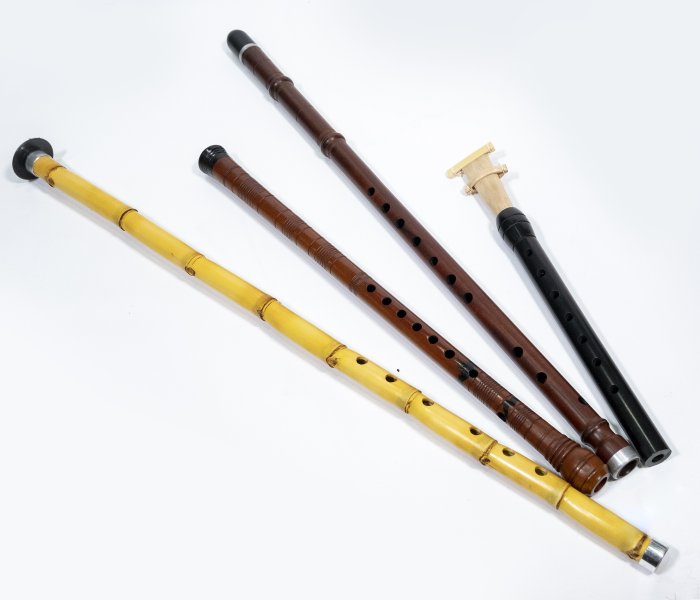
Daf - Daf, erbane - Ilość przedmiotów: 3 - Turcja
Nr 78892209

Nr 78892209

First photo left to right; Ney, Dilli Kaval, Dilsiz Kaval, Mey. Anatolian traditional wind instrument collection in one lot. They were carved from wood and made by hand.
The ney, an ancient and mystical wind instrument, holds a revered place in the realms of traditional Middle Eastern and Turkish music. Crafted from a hollow cane or reed, the ney's simplicity belies its profound ability to evoke emotions and captivate listeners. The ney is a traditional Turkish wind flute instrument that holds a profound cultural and spiritual significance. Its history spans centuries, dating back to ancient times, and its melodious tones have been an integral part of Turkish and Sufi music, evoking deep emotions and spiritual connections. Since ney flute is handmade and the structure of the reed is different, the sound of each instrument is one of a kind. The length is 70cm.
The dilli kaval, a traditional wind instrument, holds a significant place in Anatolian and Turkish folk music. It stands out for its simple yet distinctive design and its ability to produce soulful, captivating melodies. Crafted from apricot tree, the dilli kaval consists of a cylindrical body with a blowing edge and six finger holes along its length. What distinguishes it from other flutes is the presence of a small wooden block, called the "dil" or tongue, inside the instrument. This feature contributes to its unique sound and enables players to achieve a wide range of tones and articulations. The length is 49cm.
The dilsiz kaval, also known as the "dilsiz" or "kaval," is a traditional Turkish and Anatolian flute-like instrument renowned for its simplicity and hauntingly beautiful sound. This unique instrument, crafted from plum tree, stands as a symbol of cultural heritage and musical tradition. Unlike the dilli kaval, the dilsiz kaval does not contain a wooden block or tongue inside its body. Instead, it features a simple, cylindrical tube with seven finger holes and a blowing edge. The absence of the wooden block gives the dilsiz kaval its characteristic clear and pure sound. The length is 64cm.
The mey, an integral part of traditional Turkish and Middle Eastern music, is a captivating double-reed woodwind instrument known for its distinct sound and cultural significance. This ancient instrument holds a revered place in various musical genres and cultural practices. Crafted from ebony tree, the mey consists of a conical body with seven finger holes and a double reed, similar to other double-reed instruments like the oboe. Its compact size and unique structure allow for a wide range of melodic expression and tonal versatility. The mey's sound is characterized by its haunting and emotive quality, capable of conveying a wide range of emotions, from melancholy to joy. It has been an integral part of various musical traditions, from folk music to classical and ceremonial performances.
Jak kupować w serwisie Catawiki
1. Odkryj coś wyjątkowego
2. Złóż najwyższą ofertę
3. Dokonaj bezpiecznej płatności